Swift movement outside the window caught my eye, as a bird landed in a nearby tree branch. Was that a Cedar Waxwing?
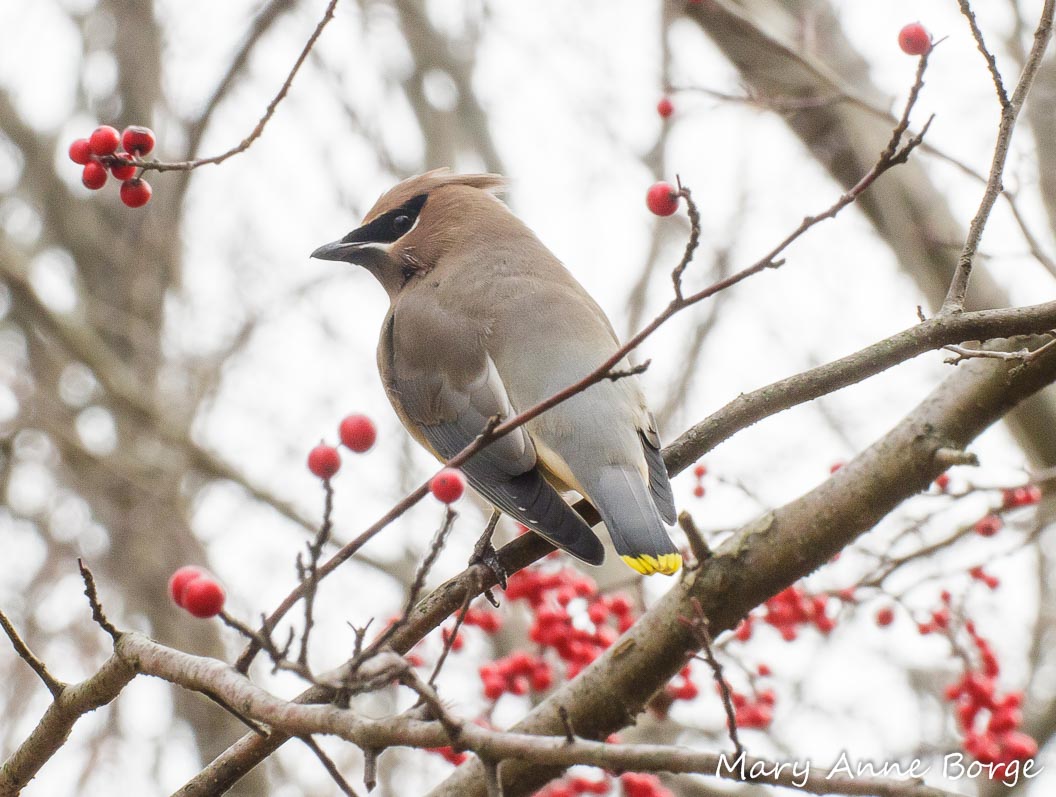
Another bird came in for a landing.
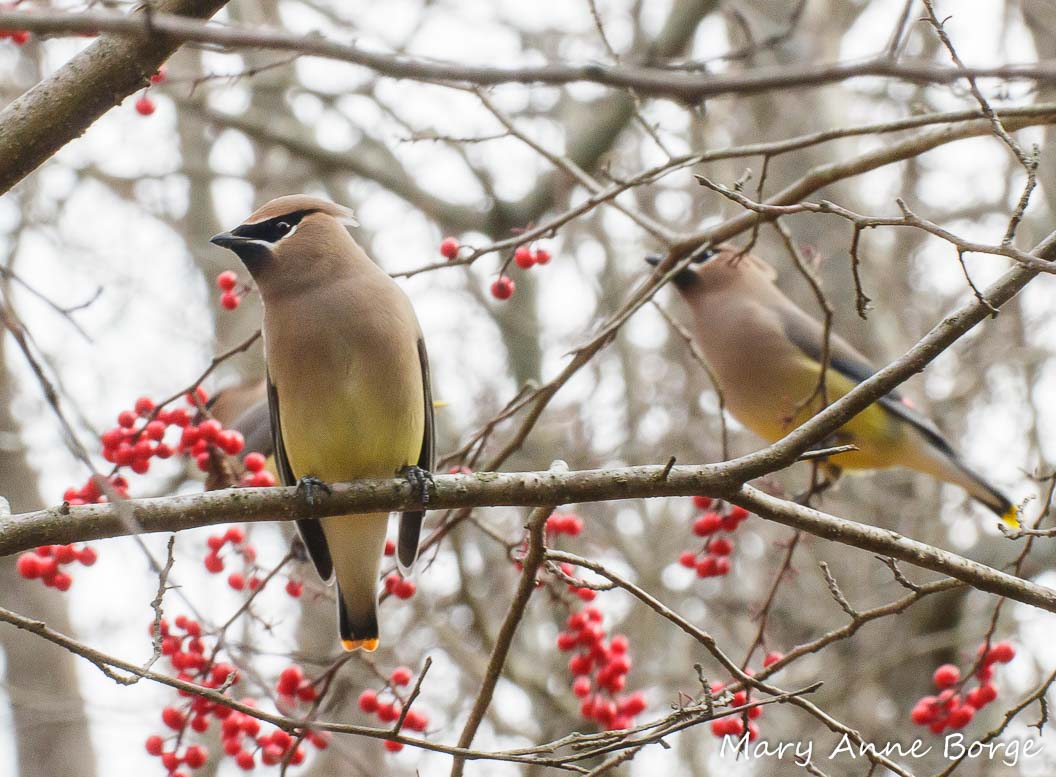
Then another.
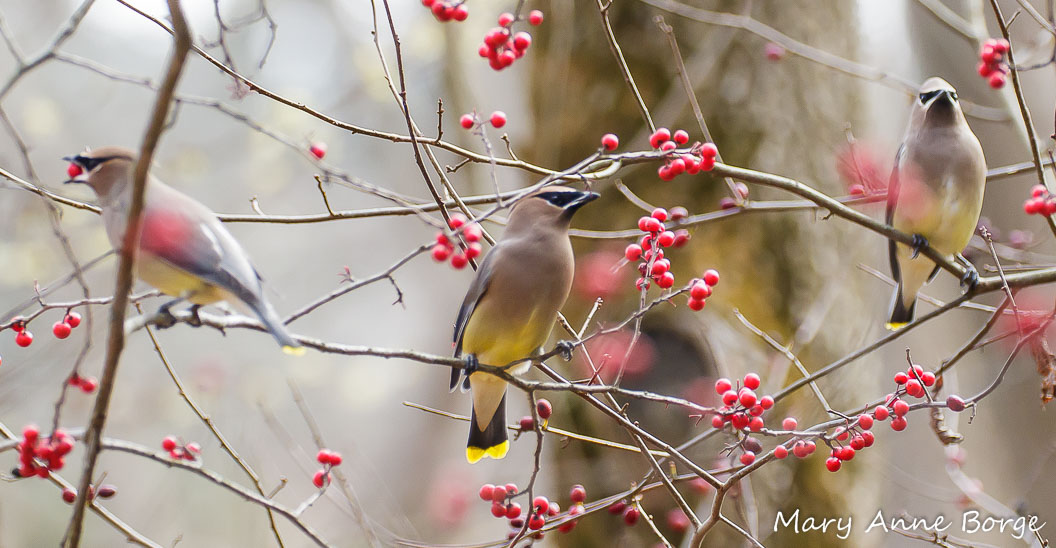
They kept coming, until there was a flock of Cedar Waxwings perched in and around our Winterberry Hollies (Ilex verticillata).
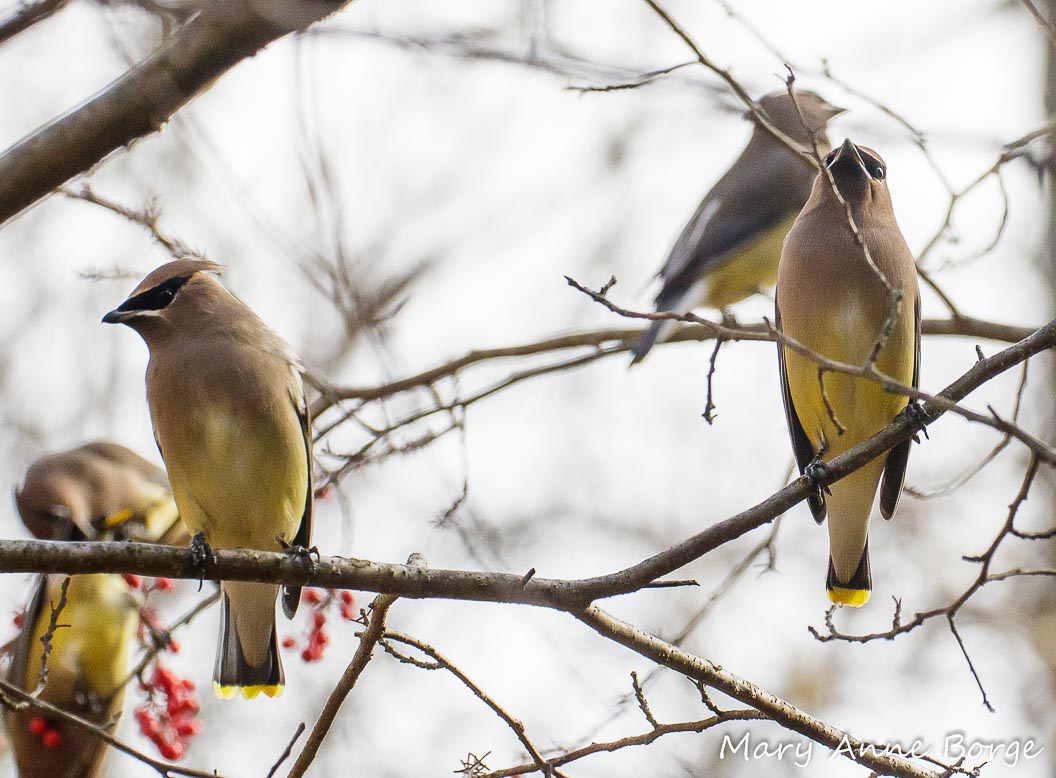
They were here, of course, for the fruit. Cedar Waxwings are especially dependent on fruit in their diet, so much so that ‘Cedar’ in their common name is a nod to Eastern Red Cedar (Juniperus virginiana), whose fruit-like cones are an important source of winter food for this bird. The other part of their common name, ‘Waxwing’, refers to the waxy looking red tips on their secondary wing feathers.
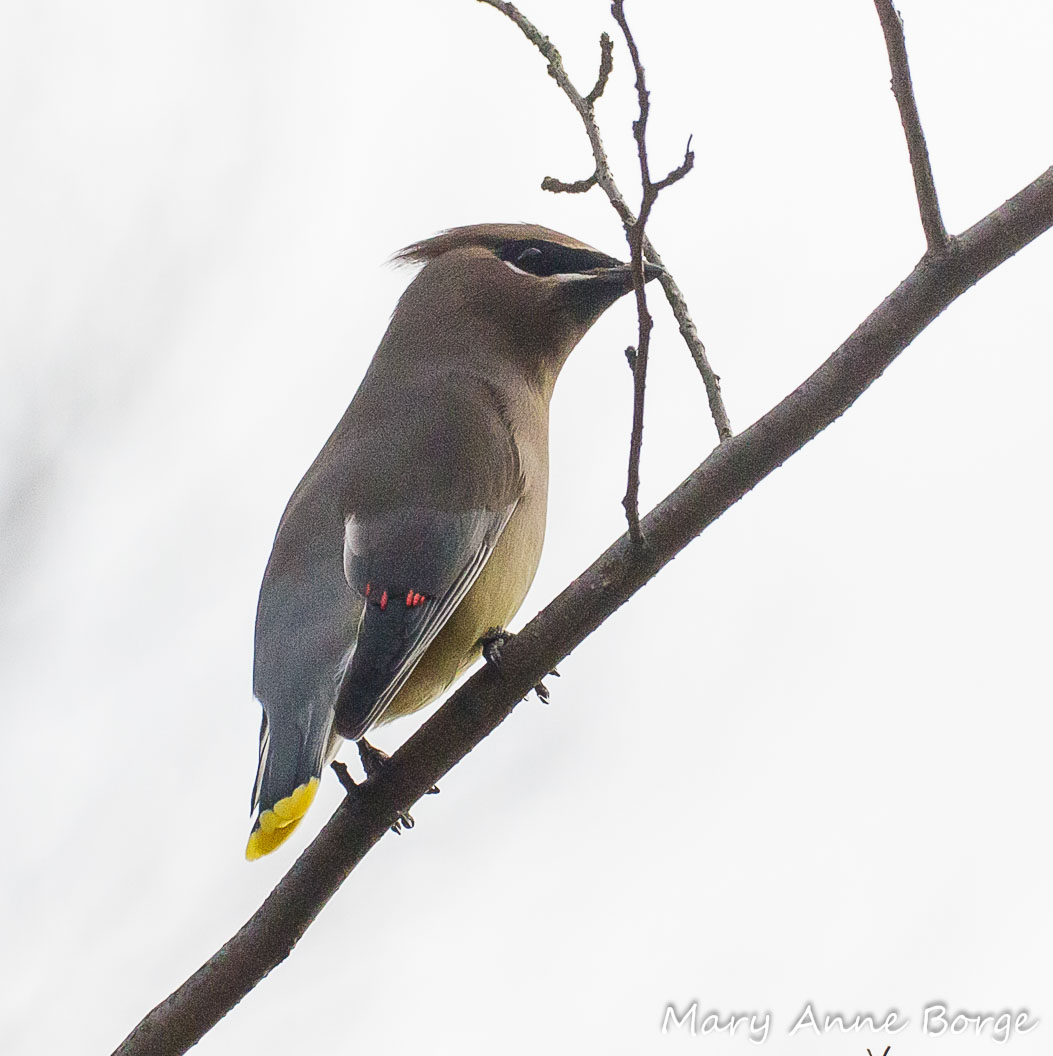
Like most other birds, Cedar Waxwings also eat insects, especially when they are breeding and raising young. I did see one bird take a break from the Winterberry fruit to browse the branches of a nearby Witch-hazel (Hammamelis virginiana) for some insect protein. But fruit was the main attraction for this flock.
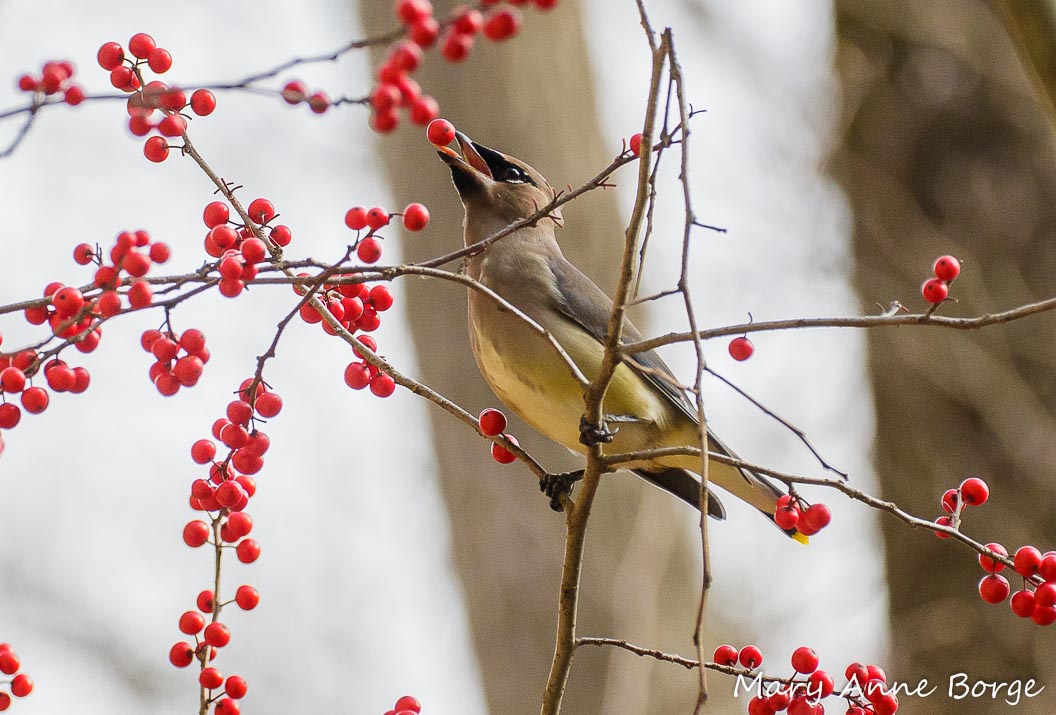
While I watched, the birds put on an impressive acrobatic display in pursuit of the delectable fruit.
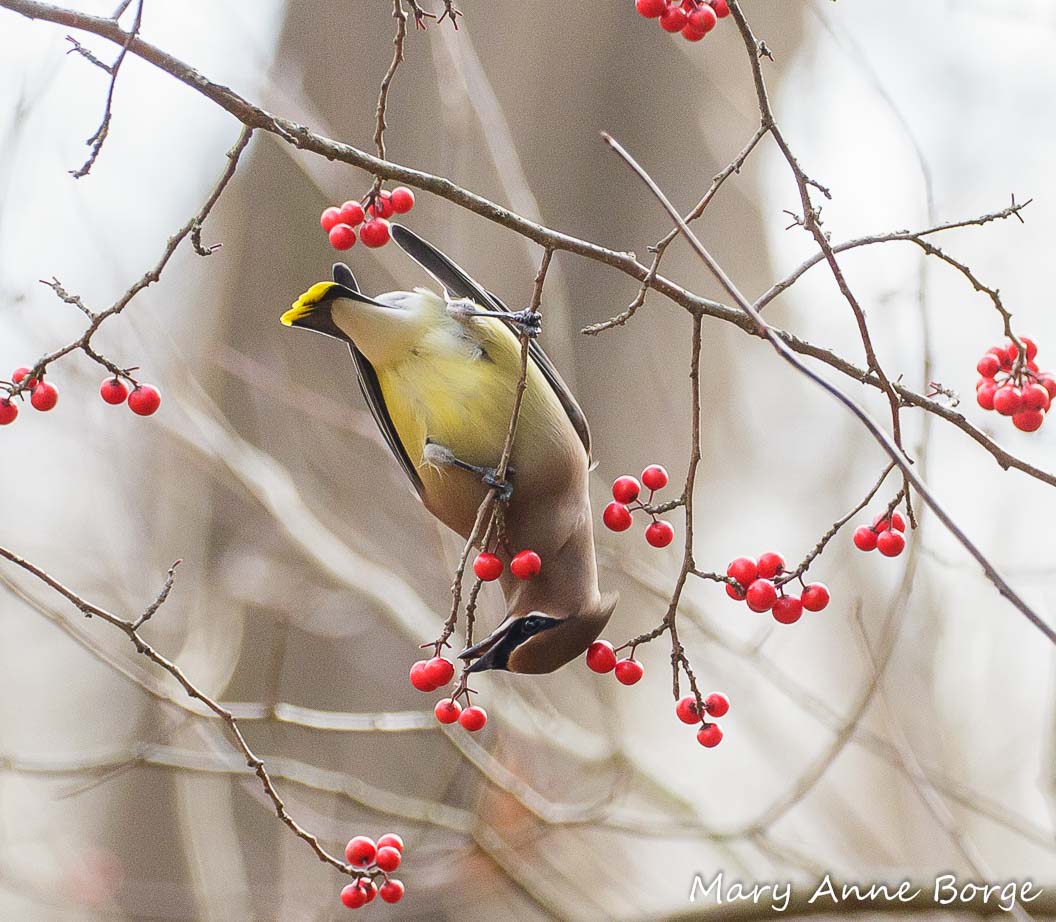
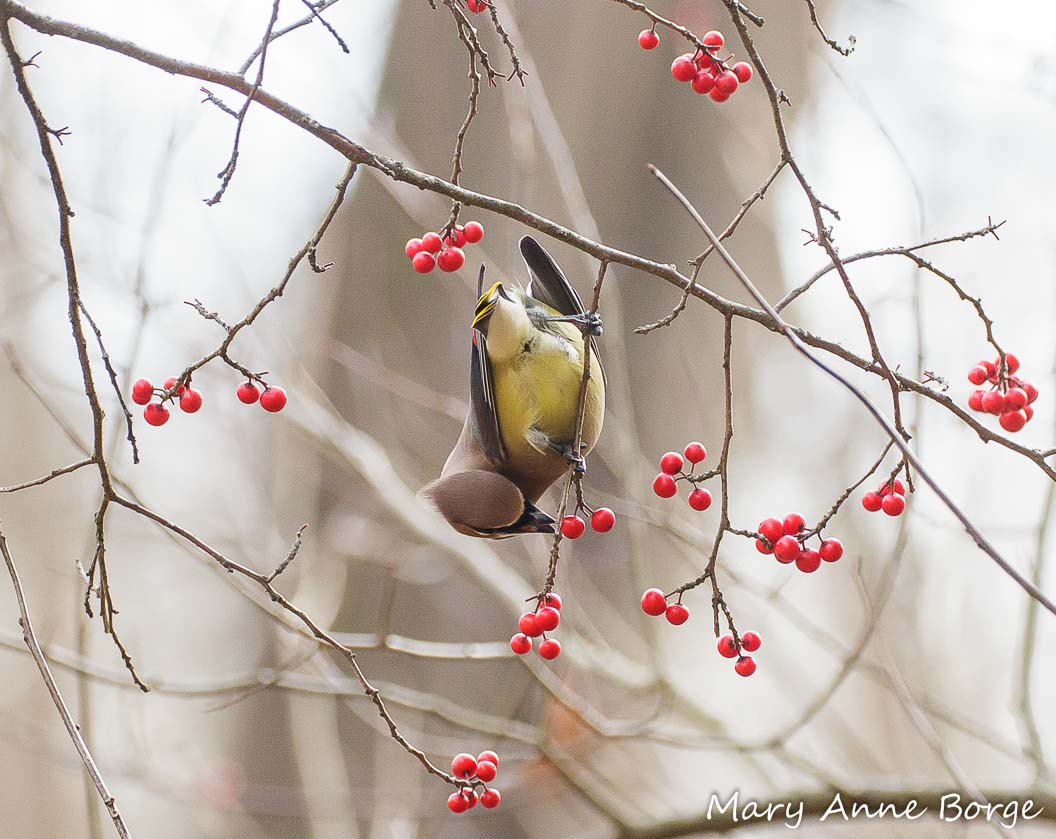
It’s not by accident that such an abundance of fruit is available for these and other birds. The groundwork is laid in late spring, typically June where I am in central New Jersey, when these shrubs produce a wealth of small flowers that are a major attraction for pollinators, including many different species of bees, wasps and flies.
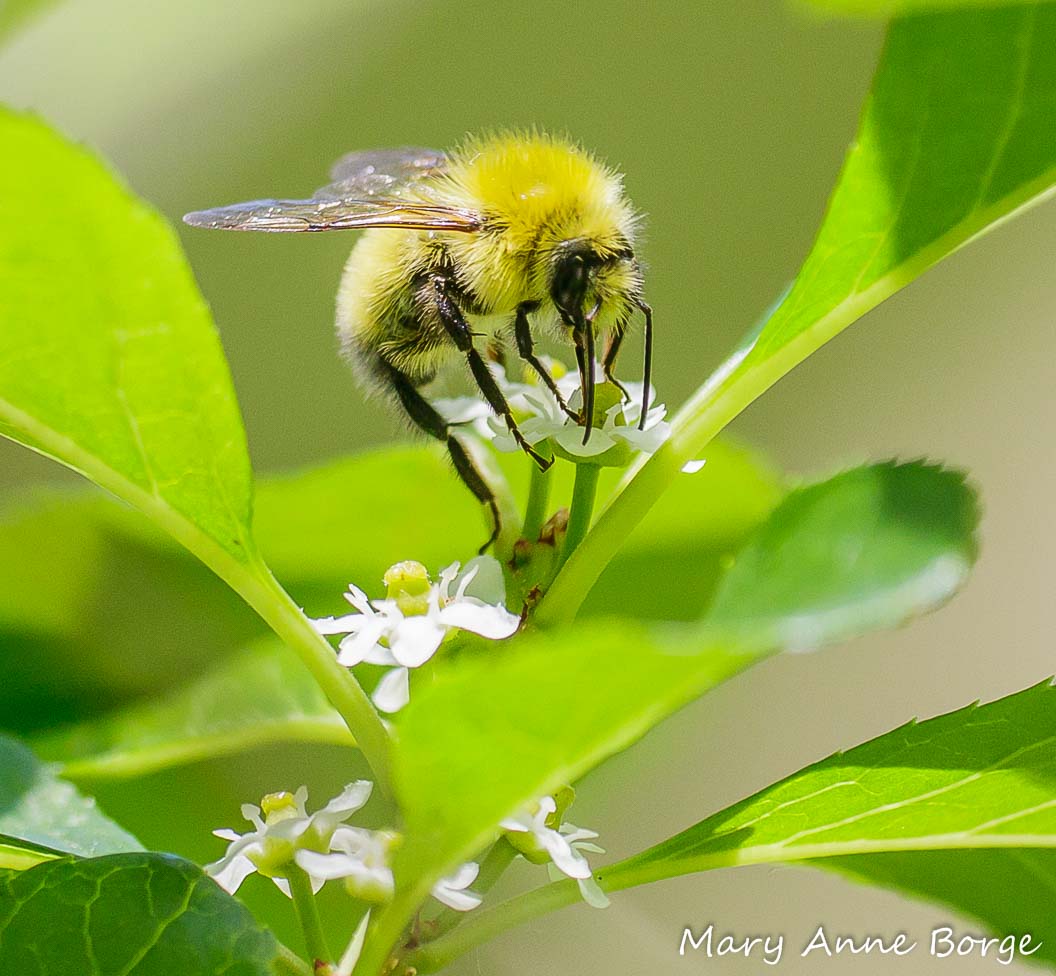
While they stayed with us, the Cedar Waxwings also ate the remaining Blackhaw Viburnum (Viburnum prunifolium) drupes, as well as some crab apples. The birds moved on after three days, when the trees and shrubs were stripped of their bounty. It was a mesmerizing spectacle while it lasted.
Cedar Waxwings are typically found in woodland habitats, near water or woods edges, but they are sometimes found in open fields, too. It all depends on food availability. They are sociable birds, and often nest in proximity to other members of their species, with several nests possible in a single ‘neighborhood’. When they aren’t breeding, they travel in flocks, moving from place to place to find the fruit they need. A few days before the invasion of this flock, I saw one or two Cedar Waxwings in the trees outside. Because of their gregarious nature, it’s unusual to see a lone bird of this species. Now I can’t help wondering if these early birds were scouts, looking for the next food stop for the group.
To attract Cedar Waxwings to your own yard, be sure to provide the fruit they love. In addition to Winterberry Holly and Eastern Red Cedar, American Holly (Ilex opaca), Flowering Dogwood (Cornus florida), native viburnums such as Blackhaw (Viburnum prunifolium), Pokeweed (Phytolacca americana), Mountain Ash (Sorbus americana), hawthorns, apples and grapes are all very appealing to this sleek and lovely bird. To see them in summer, offer them blueberries, serviceberries, cherries and blackberries, among other fruit.
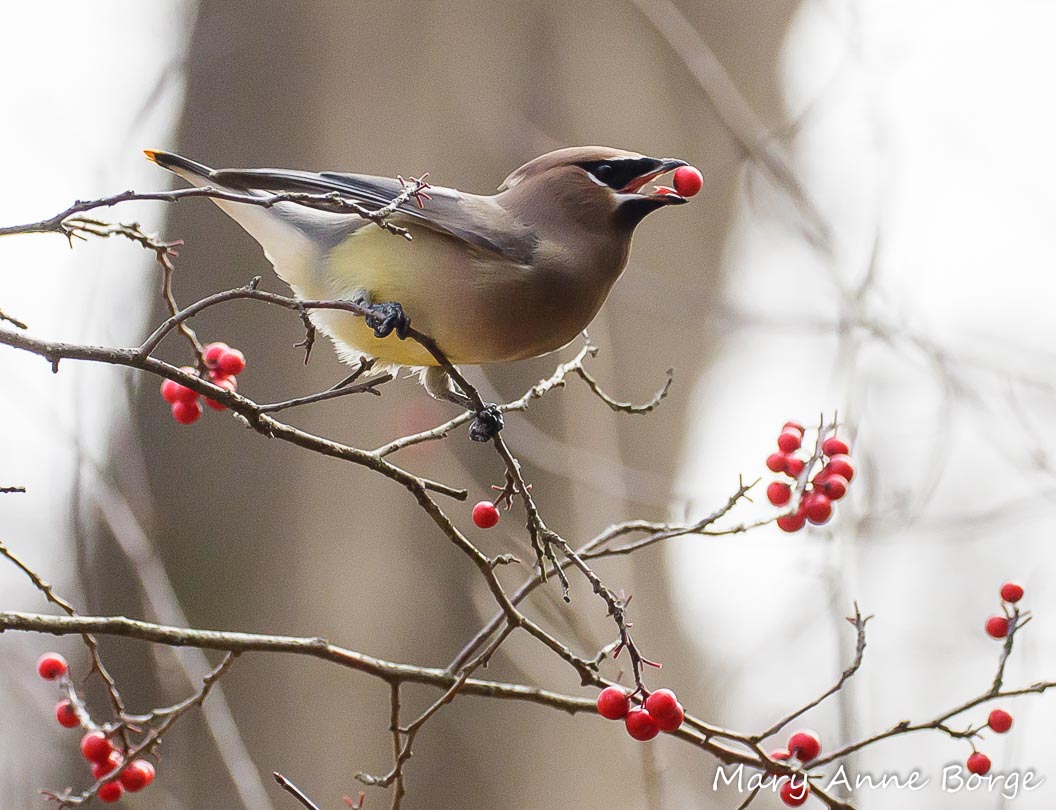
Related Posts
Where Do Winterberries Come From?
Blackhaw Viburnum – A Subtle Beauty
What Do Juniper Hairstreaks and Cedar Waxwings Have in Common?
Resources
All About Birds, the Cornell Lab
Sibley, David Allen. The Sibley Guide to Bird Life & Behavior. 2001.

Had a flock yesterday in Virginia Beach. Rare sighting here. 🙂
Exciting!
Your article was very informative and the picture’s definitely depicted the agility and beauty of these gorgeous birds! I had never seen a Cedar Waxwing until a few years ago when my Mulberry tree became productive. Now there are flocks( or swarms) of them daily in the Spring as they sweep down as one to gobble up the mulberries! I enjoy sitting on my front porch watching their antics, very entertaining. I live in South Alabama next to a stream and wooded area which seems perfect for them. My only problem is that they hardly leave any mulberries for me to make my jellies😍
They’re so beautiful and fun to watch! I hope you find the loss of mulberries a reasonable price to pay to see them.
I am in Utah and have had several cedar waxing visiting my apple tree that still has apples from last summer hanging on for dear life. These wax wings are one of seven different species that I have spotted in my tree. I’m loving the entertainment.
It’s so much fun to watch wildlife right outside your own door!
I live in Aledo , Texas just west of Fort Worth. I was sitting by a window and all of a sudden several of these birds arrived on a berry tree and feasted for about 3 minutes before they flew away !! I had my phone so I snapped about 5 or 6 pictures of them !! I had never seen them before ! They were beautiful !
What a lucky sighting! I agree, they are beautiful birds.
Pingback: Backyard Natural Wonders – 2022 Highlights | The Natural Web
I get them in the early summer when the elderberries are fruiting. I did plant 2 Eastern Red Cedars in my backyard and they are loaded with drupes, hoping to see them this winter.
Good planting strategy!
Thank you, Mary Anne. You really captured the naturalist’s dilemma. One must stop immediately and take advantage of a sighting because once the food is gone, it’s over. Thanks, too, for the great planting ideas. Your photos are my favorite holiday gift. Thanks for all you have taught me.
I didn’t get much work done while these birds were here! I’m glad you enjoyed the post. Happy holidays!
I love all of your posts!!!!
Thank you, Deedee!
Your photos are so beautiful. You must have been on cloud nine taking these photos! I’ve never had a cedar waxwing siting. I’m hopeful now since I live in PA across the river from the central Jersey area. Will keep an eye out for them.
Thank you! I have to confess I didn’t get much work done while they were here! If you live near Bowman’s Hill Wildflower Preserve (just south of New Hope, PA), look for them there. I’ve seen them near the new pond, near the exit gate. There are several Eastern Red Cedar and Winterberry Hollies there, so plenty of food. I saw one there just yesterday.
Great to know where they are at Bowman’s Wildflower Preserve. I’m a member and will go check it out. Thank you!
You’re welcome! Have fun!
So wonderful. A great and informative read.
Thank you, Hilary!
Really great photos of one of my favorite birds – you captured their essence beautifully too! If the deer ever stop pruning my still-small winterberries (we had exactly one berry this year), I would love to witness a similar spectacle.
Thanks, Juanita! One berry is a start. Maybe try a small fence around your winterberries until they grow beyond deer browse height?
Beautiful photography and great information as always Mary Anne. My winterberry is chock full and ready for the gleaning.
Thanks, Pam! Keep an eye out – They may be at your house next!
Lovely photos!
Thanks, Deb!
Your pictures are amazing! A beautiful bird, used to get them every year in my Bradford Pear, until I decided it had to go! I’ve always wondered if they found another good food source.
You did a good thing getting rid of your Bradford Pear. Now you just have to replace it with one (or more!) of the native species the Cedar Waxwings love!
There’s something about these photos that are award-worthy: the red berries against the neutral background and the beautiful waxwing coloration. Simply exquisite. They took my breath away!
Thanks, Julie! Nature is beautiful!
Awesome photos as always, Mary Anne! Would make lovely Christmas cards! Happy Holidays!
Thanks, Shona! Happy holidays to you, too!
Wow, great photography! I saw Cedar Waxwings come and go so quickly last winter in Pittsburgh, I’m glad your post reminded me to watch for them this year!
They are so beautiful! But they stay only as long as there is fruit available (I totally relate to that!), so you have to be on the alert.